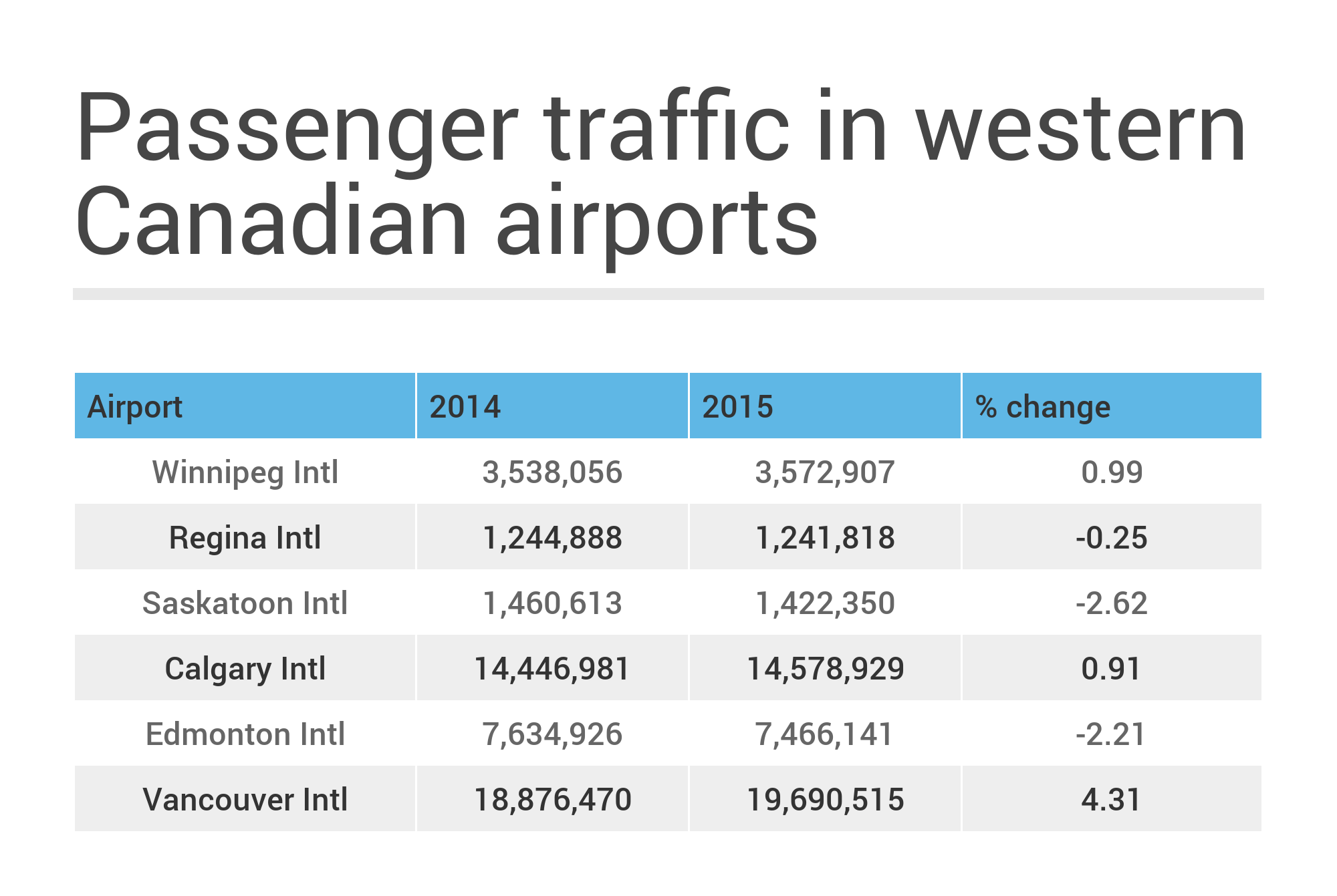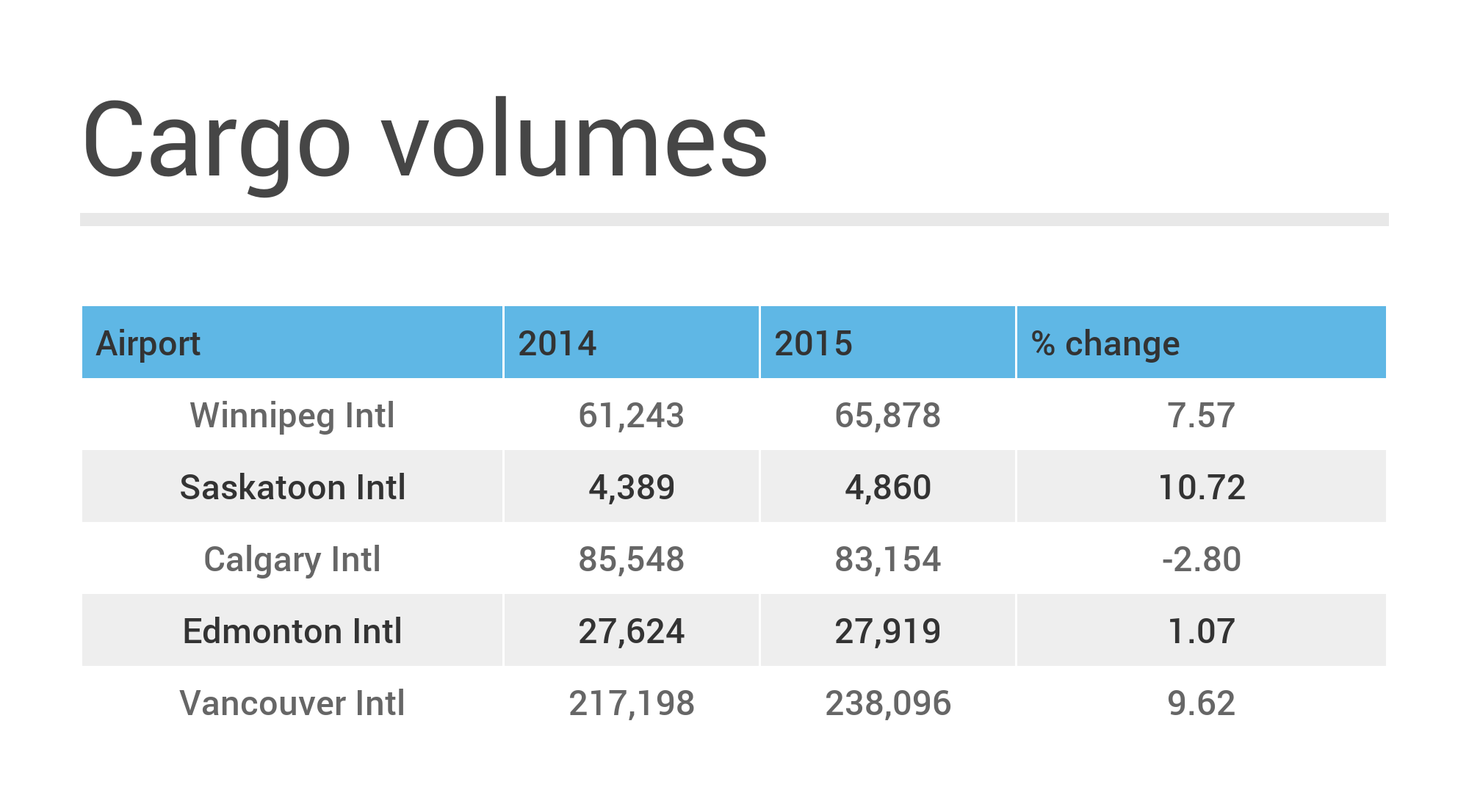photo credit: Ronnie Chua / Shutterstock.com
After five years of steady increases in passenger traffic at all the major airports in western Canada, Edmonton, Saskatoon and Regina saw decreases in 2015 compared to the previous year.
 Source: Canada West Foundation
Source: Canada West Foundation
After years as Canada’s third busiest airport, Calgary International Airport fell to fourth place, overtaken by Montreal’s Pierre-Elliot Trudeau International Airport. Overall Calgary passenger volume actually grew nearly one per cent in 2015, in spite of the economic recession in Alberta. This growth was in domestic passengers; international passenger traffic declined 1.7 per cent during the same period.
During this time, WestJet reduced Calgary/Edmonton service to B.C. destinations. Passenger growth is expected to increase as new airlines come online and a new terminal is opened this fall.
Vancouver and Calgary were the only airports to see an increase in the number of passenger flights. The decrease in passenger traffic for Edmonton, Saskatoon and Regina airports can be partly attributed to fewer flights.
The Winnipeg’s James Armstrong Richardson International Airport has been seeing steady growth in passenger traffic since 2010 (six per cent). “The growth in passenger traffic is testament to (our) ‘community-first’ approach,” said Barry Rempel, CEO of the Winnipeg Airports Authority. The WAA expects growth to continue with the launch of new competitors, such as NewLeaf Travel, a discount air service. Some recent research suggests that Canada would have experienced higher traffic growth in its largest airports if it reformed its policies that limit foreign ownership and cabotage rules that restrict foreign airlines servicing routes between Canadian cities.
Cargo
The only provinces to experience an overall decrease in cargo volumes (from 2014-2015) in Canada were Alberta and Saskatchewan*, with 1.8 and 8.7 per cent respectively.
With the global slowdown in oil prices, Calgary’s airport experienced a seven per cent decrease in the total number of cargo flights and a 12 per cent decrease in international cargo volumes. Domestic cargo volumes increased by 10 per cent from 2014.
The Edmonton airport, defying the effects of the economic recession, experienced growth in freight traffic and cargo volumes in 2015, and this has continued in 2016. The volume of cargo from the U.S. declined by 18 per cent but other international cargo saw an increase of 40 per cent. The growth trend is expected to continue with Edmonton airport’s proposed $10-million distribution facility.
Vancouver International Airport maintained its position as Canada’s second busiest and experienced steady growth in both passenger traffic and cargo volumes. The Victoria airport, however, saw cargo volumes drop by one-third from 2014 to 2015.
*Breakdowns for Saskatoon and Regina airport data were not available.
– Shafak Sajid is a Policy Analyst with the Canada West Foundation

